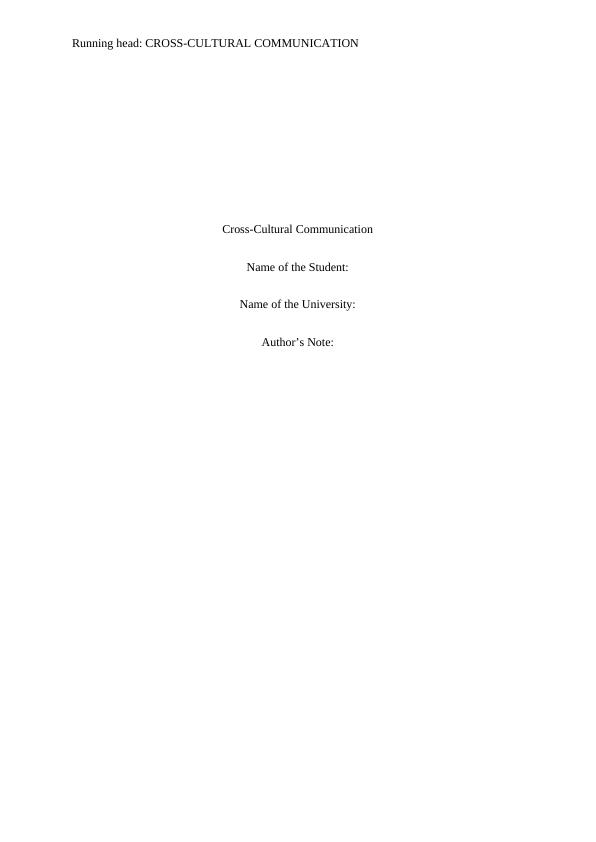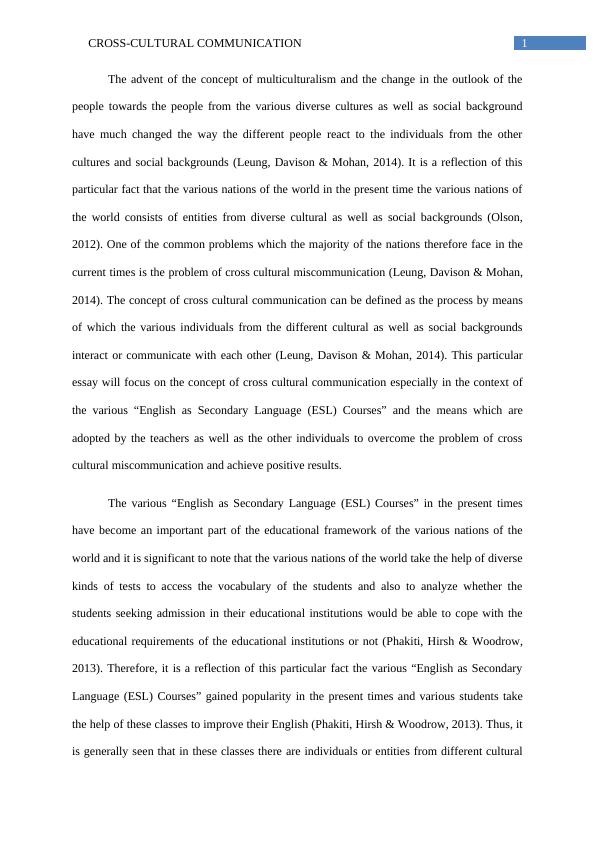Ask a question from expert
Cross-Cultural Communication 1 CROSS-CULTURAL COMMUNICATION
8 Pages2106 Words485 Views
Added on 2021-06-14
About This Document
The various “English as Secondary Language (ESL) Courses” in the present times have become an important part of the educational framework of the various nations of the world and it is significant to note that the various nations of the world take the help of diverse kinds of tests to access the vocabulary of the students and also to analyze whether the students seeking admission in their educational institutions would be able to cope with the educational requirements of the educational institutions or not (Phakiti, Hirsh & Woodrow,
Cross-Cultural Communication 1 CROSS-CULTURAL COMMUNICATION
Added on 2021-06-14
BookmarkShareRelated Documents
End of preview
Want to access all the pages? Upload your documents or become a member.
Cross Cultural Communication
|7
|2194
|255
Diversity in Public Relations: Implications for Cross-Cultural Communication
|7
|1547
|224
Business Communication: Barrier, Strategies, and Cultural Influence
|8
|517
|27
Cultural Competence in Healthcare PDF
|10
|2823
|142


